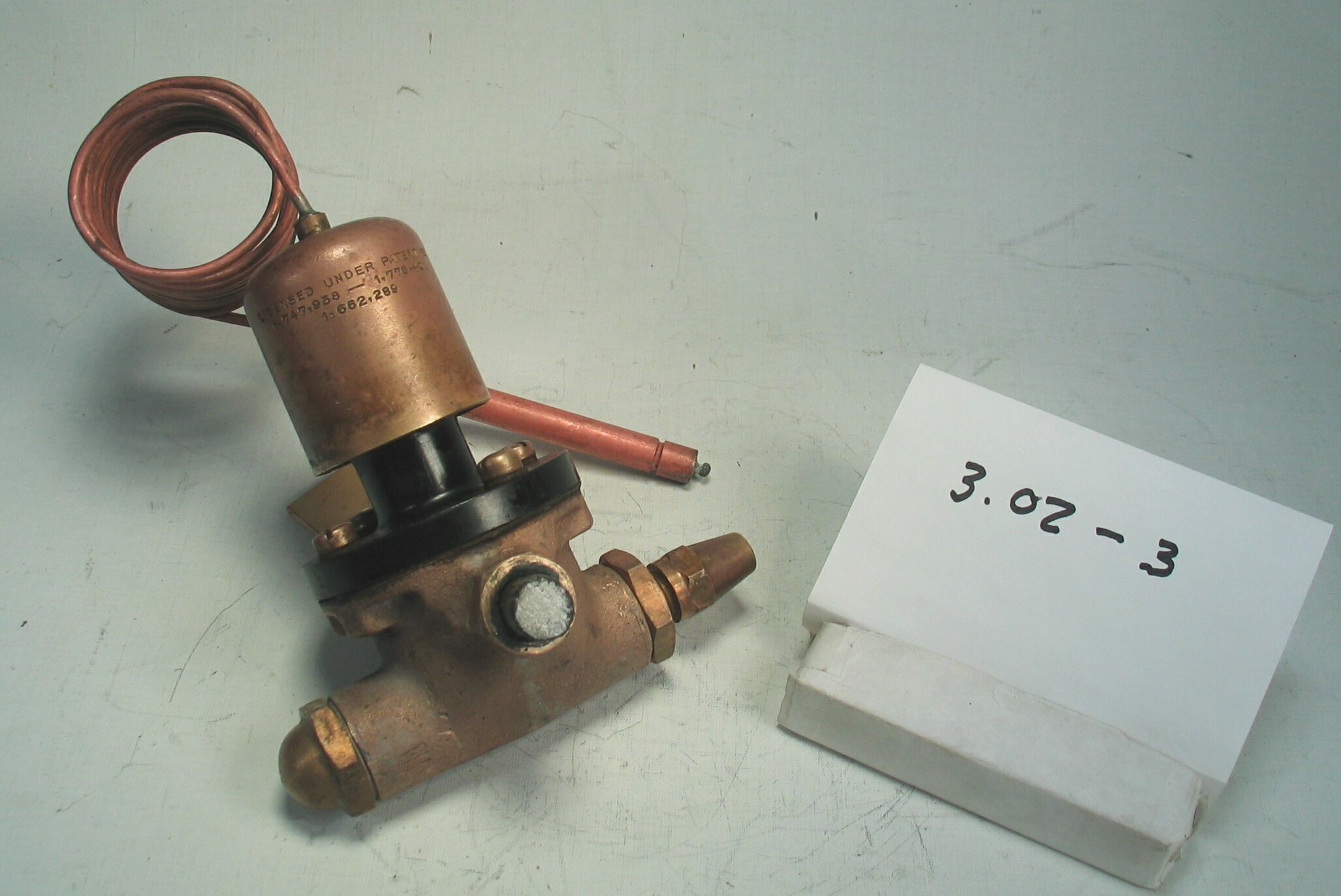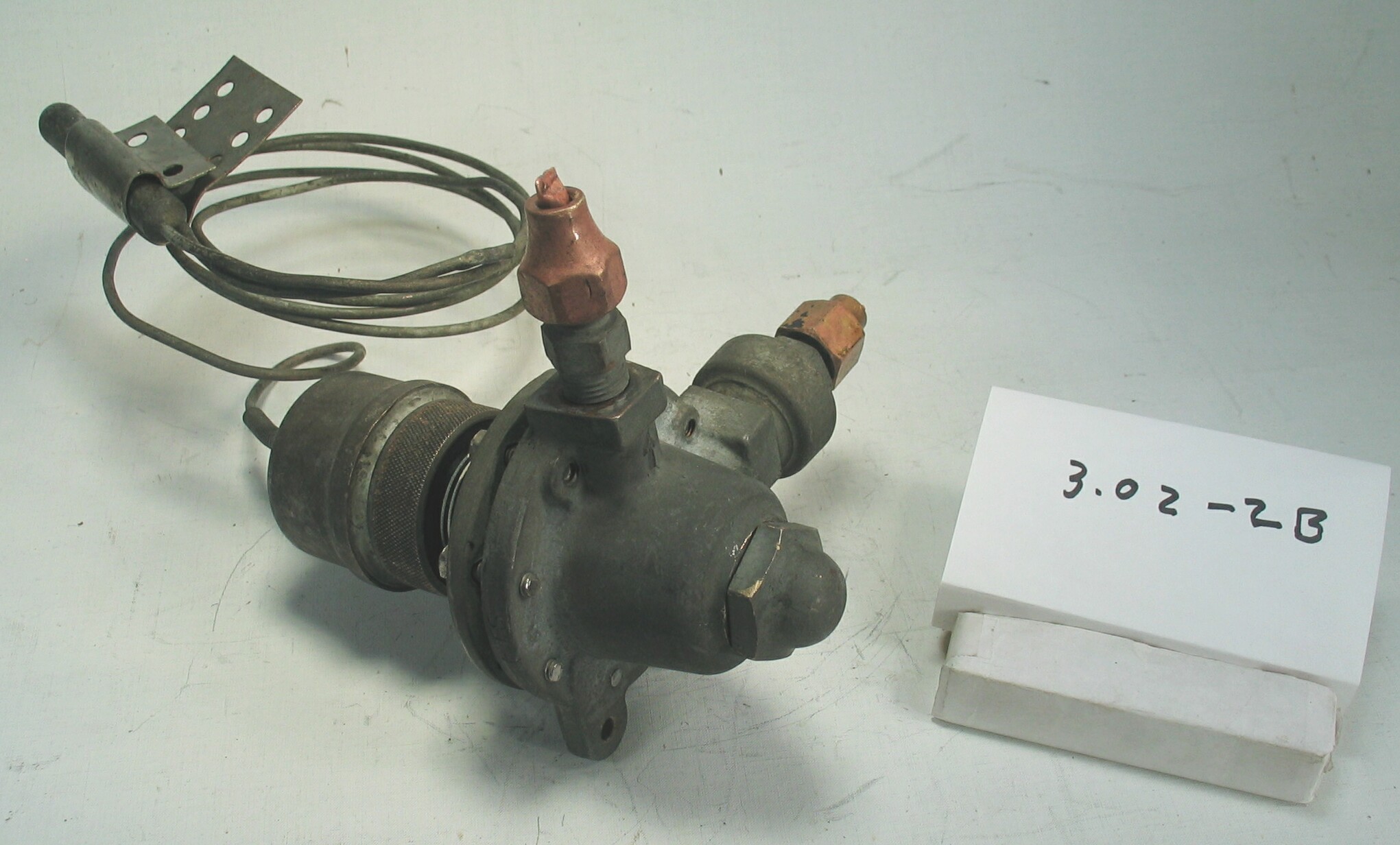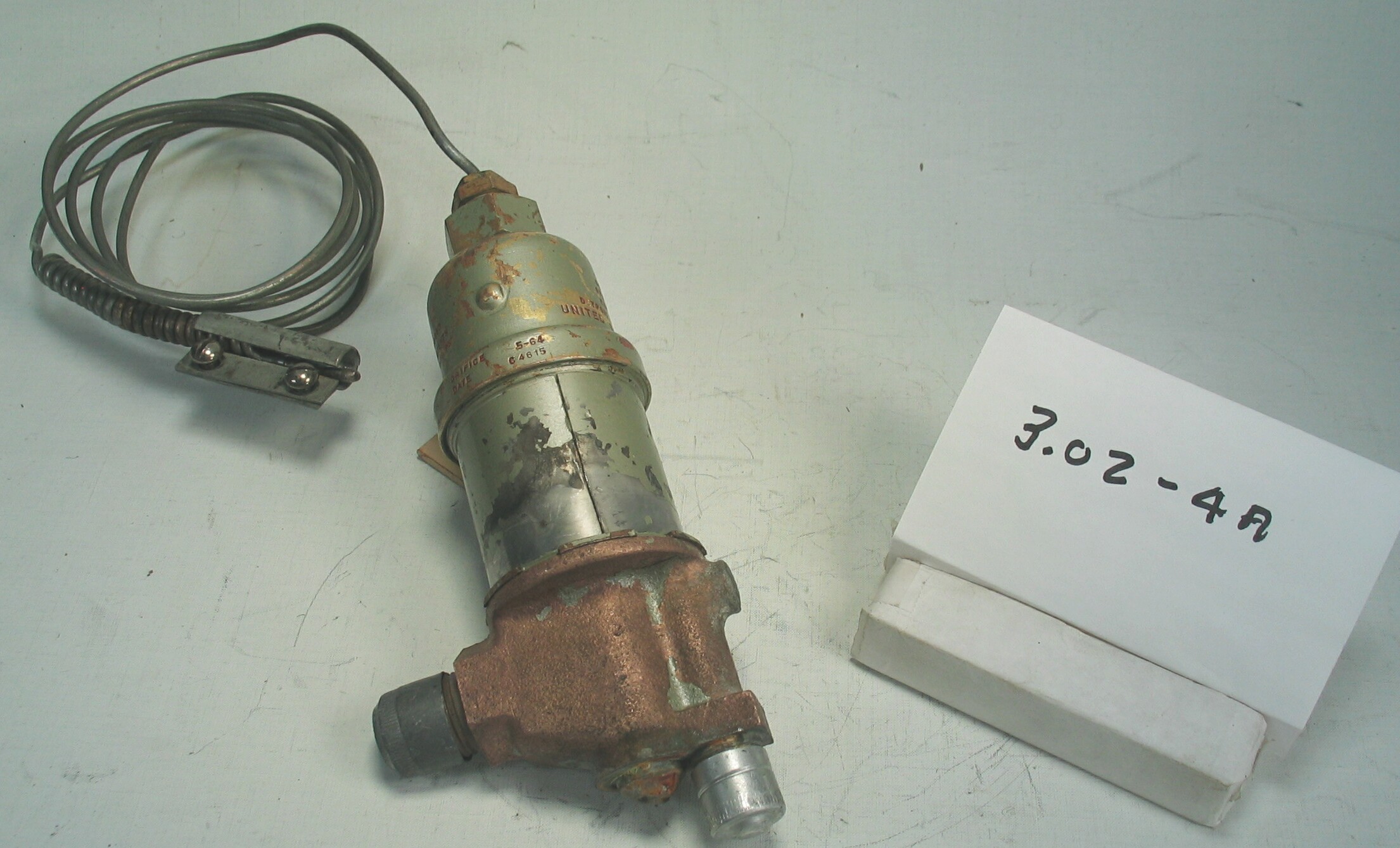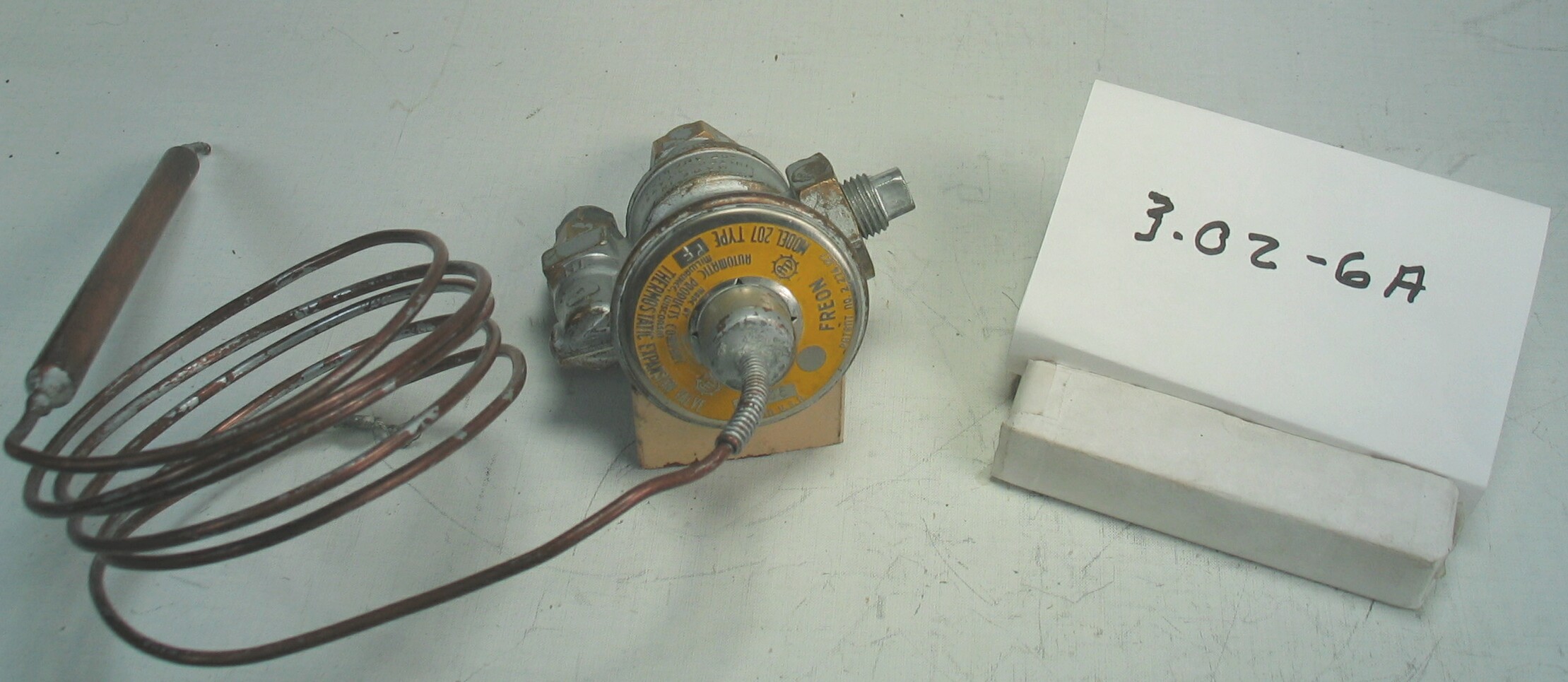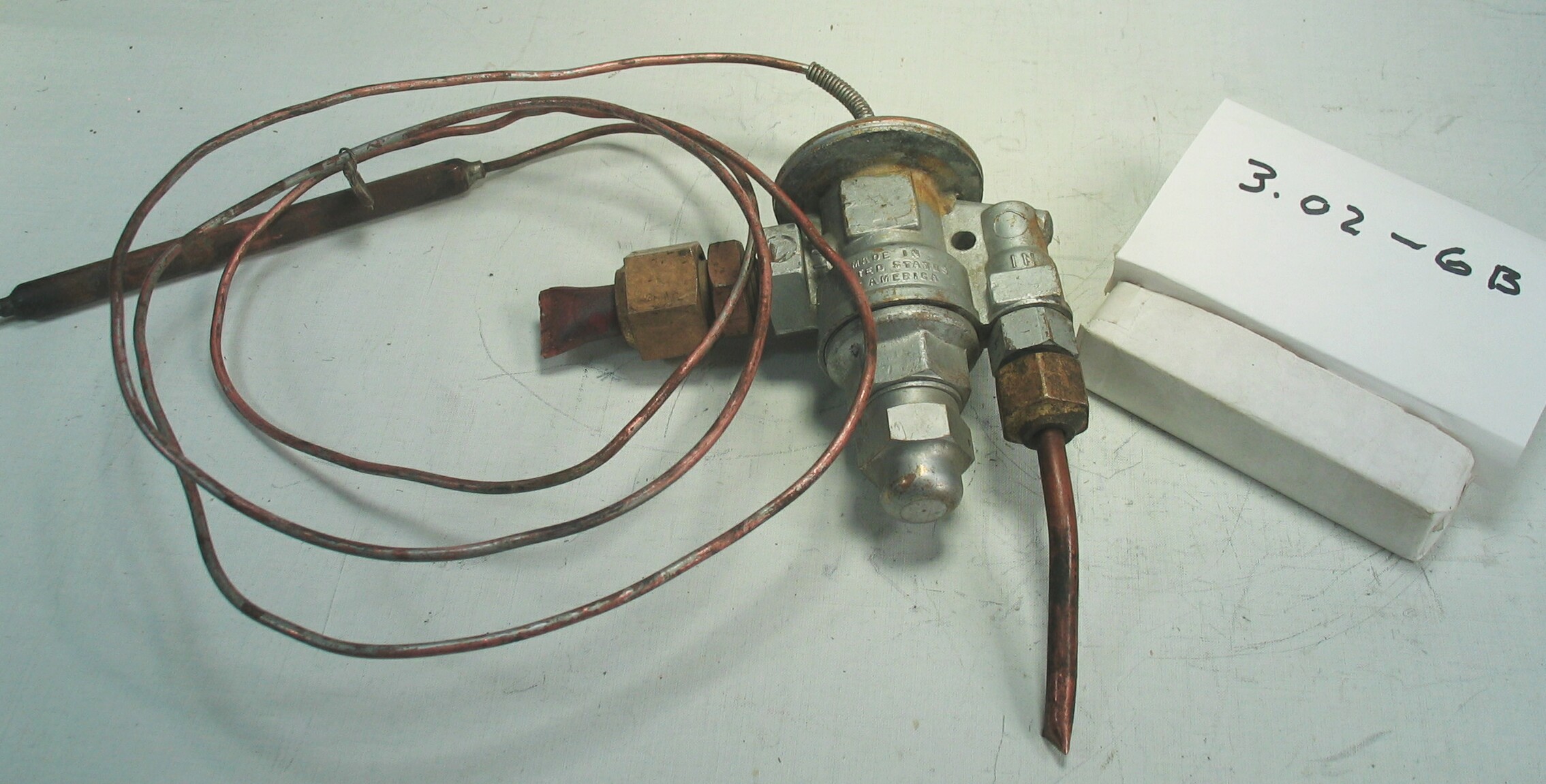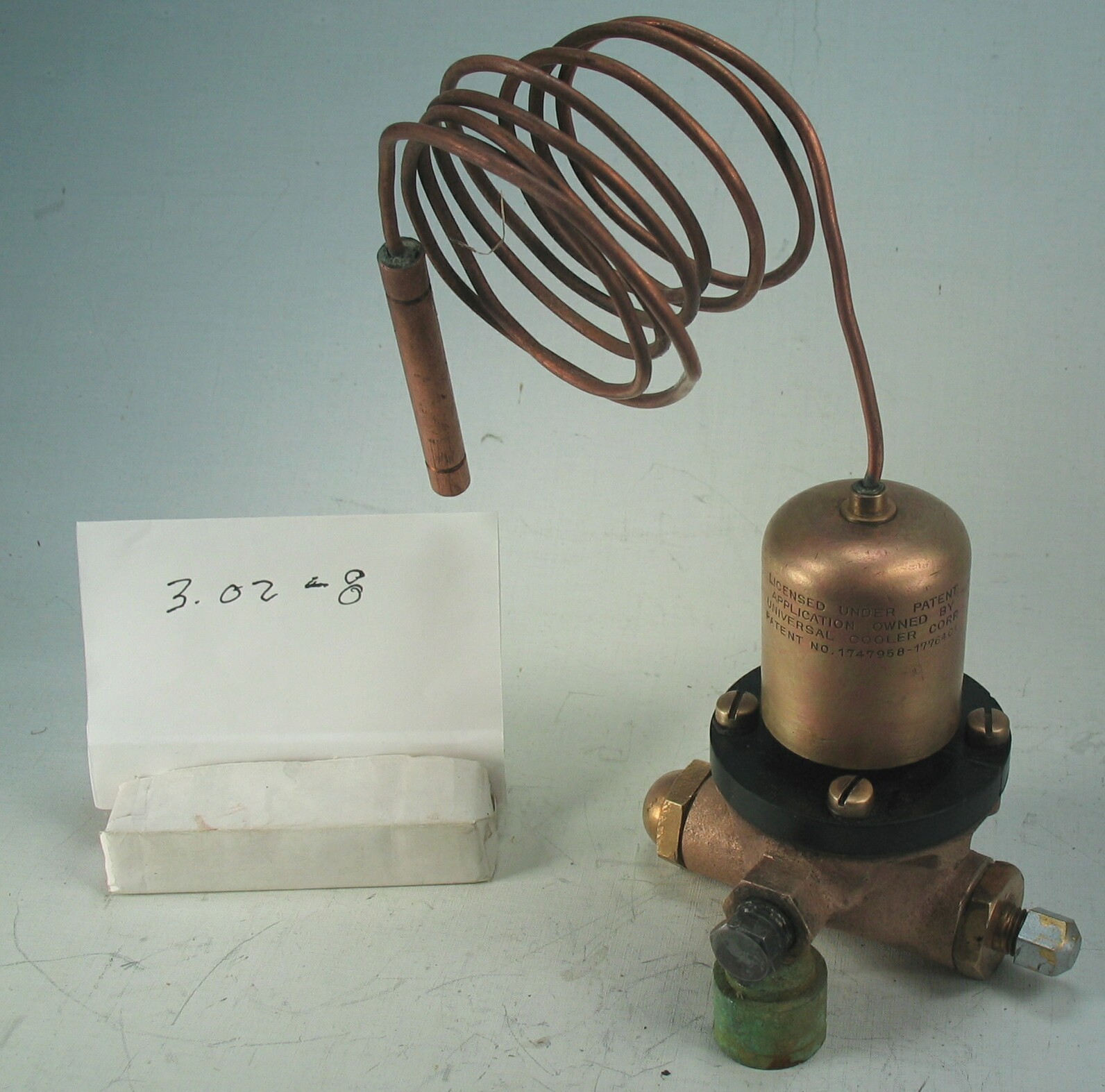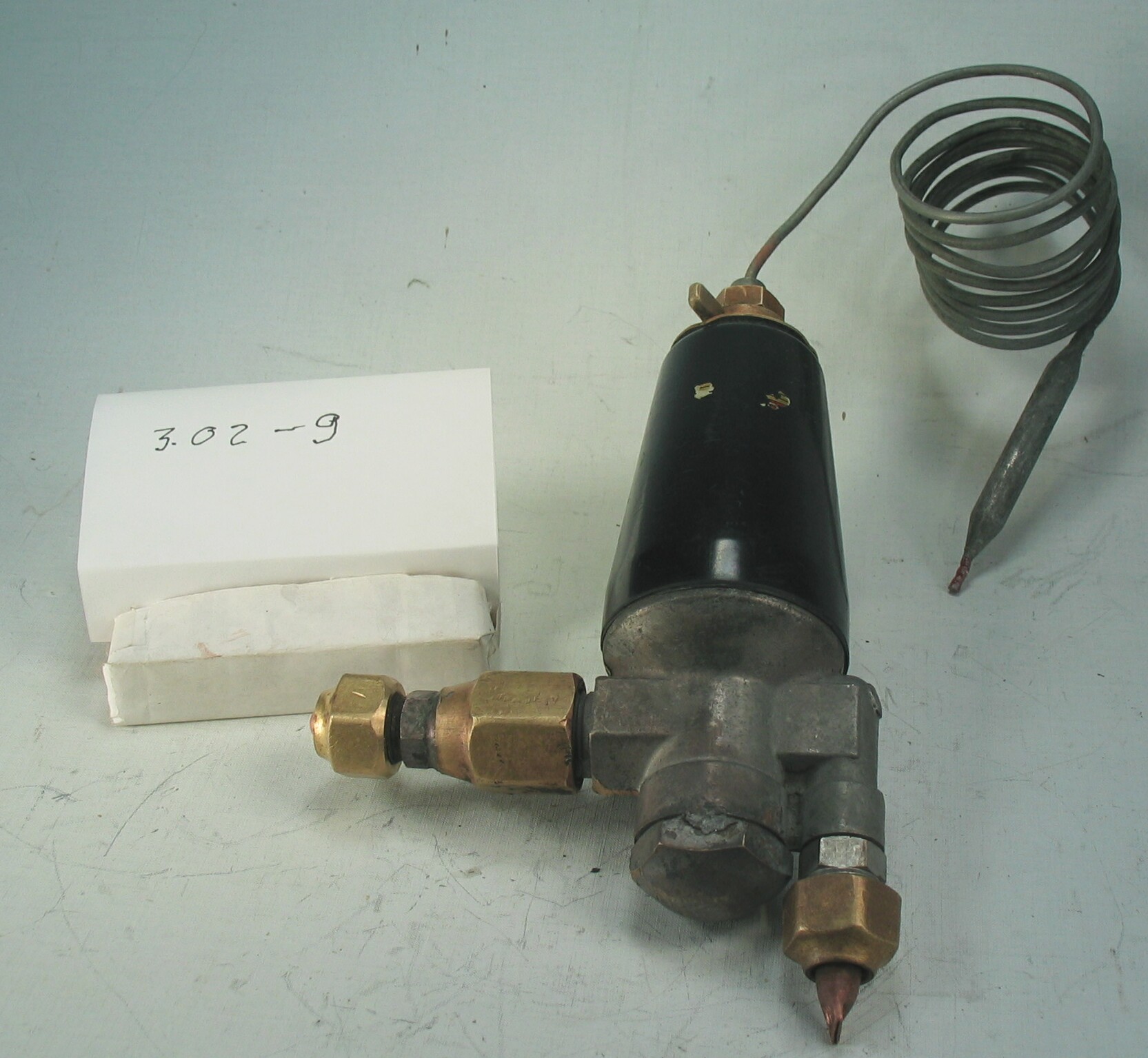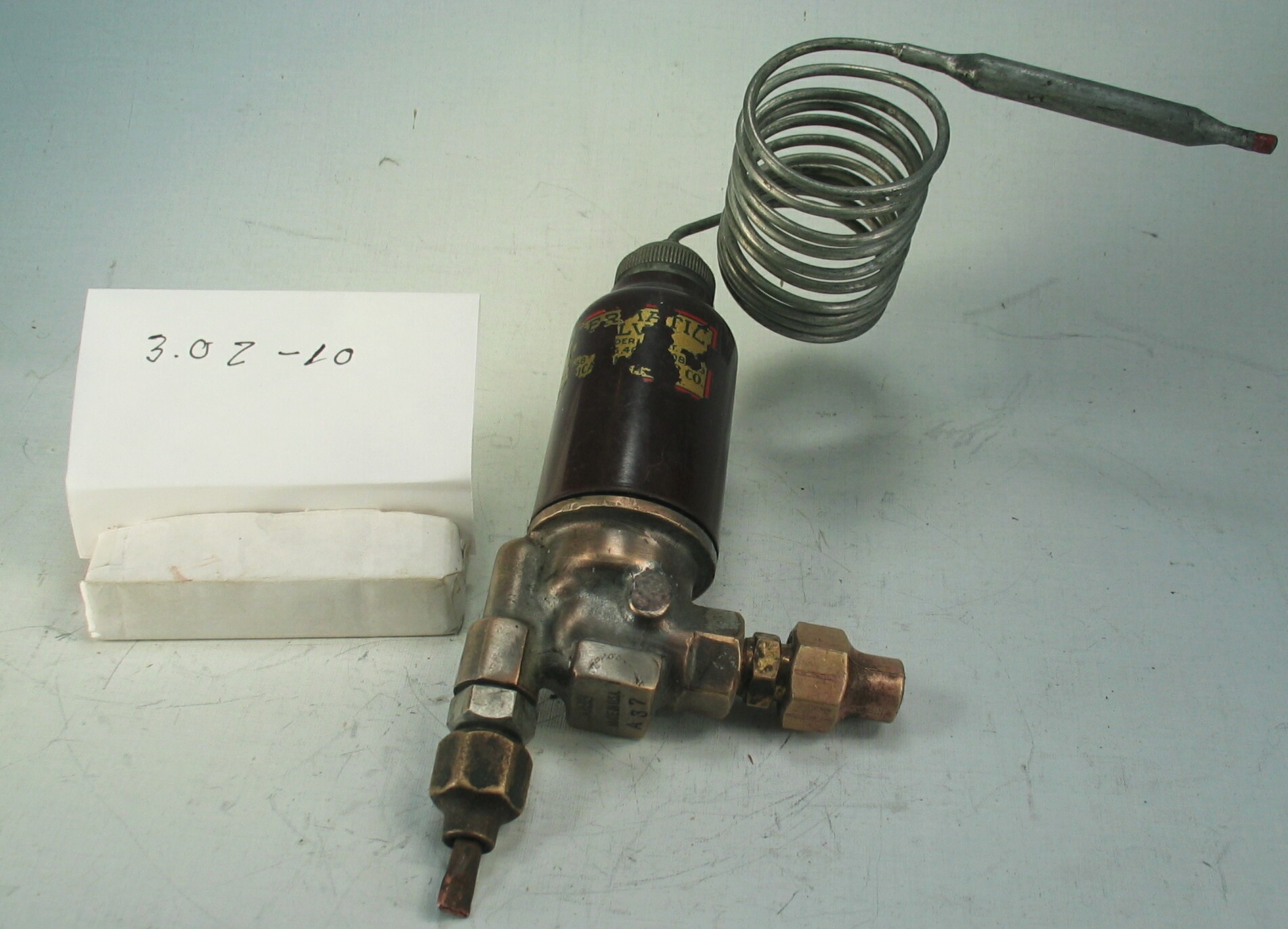3.02-2A: Frigidaire 1932 Thermostatic Expansion Valve
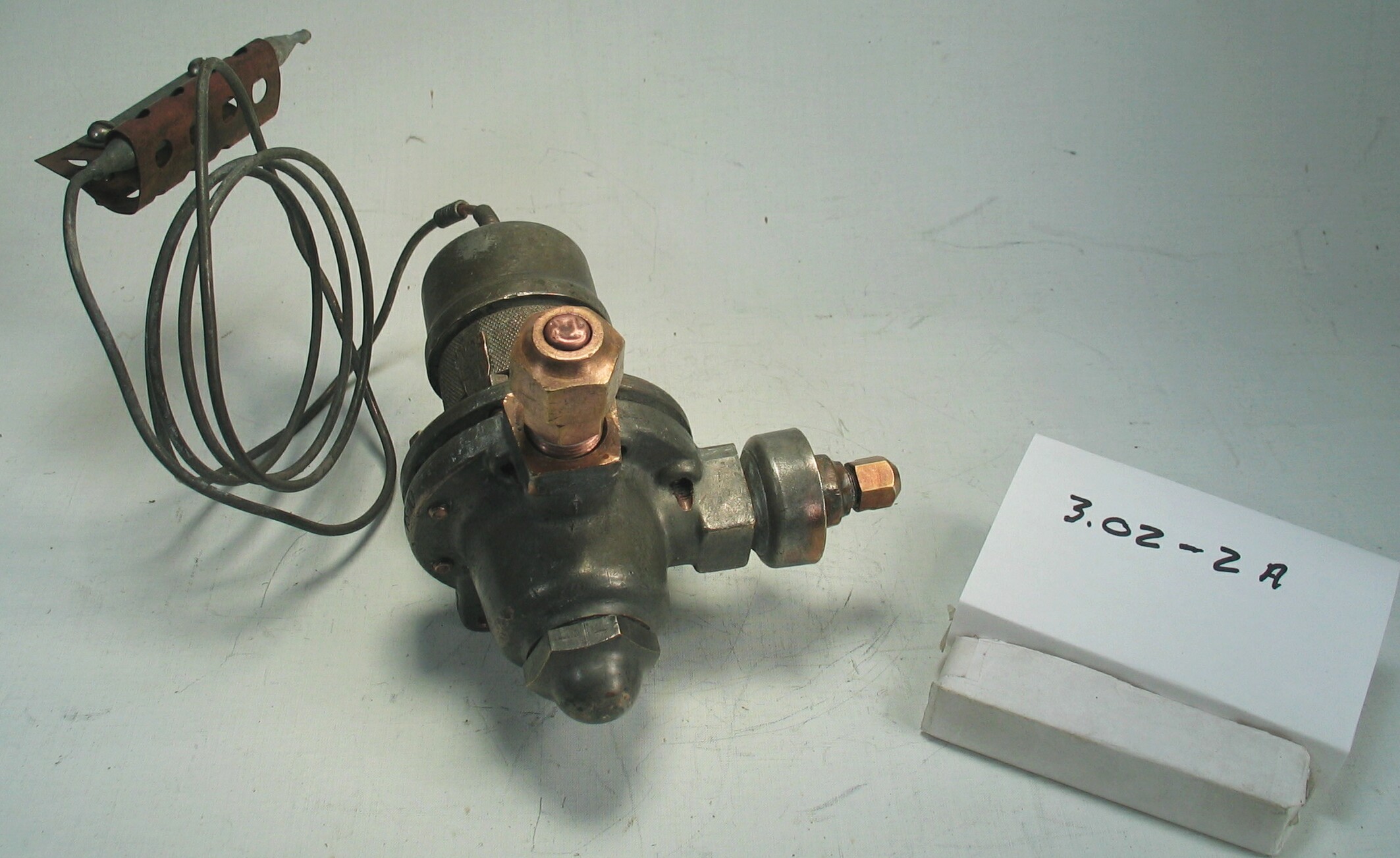
| HHCC Accession No. 2006.060 | HHCC Classification Code: 3.02-2A |
|---|
Description:
An early, adjustable thermostatic expansion valve, housed in a 4 lb. solid cast brass body with galvanised over coat; thermal power element and 4 ft. capillary tube; engineered for sulphur dioxide and a new generation of forced air cooling unit applications. It would appear much like the company’s earlier Model S automatic expansion valve, on which it was patterned; Model TS10, Frigidaire, circa 1932. [On of a set of two, see #ID 185]
Group:
3.02 Refrigerant Flow Controls - Commercial
Make:
Frigidaire
Manufacturer:
Frigidaire Corporation, Dayton Ohio
Model:
TS 10
Serial No.:
Size:
4 x 4 x 8 in. h
Weight:
4 lbs.
Circa:
1932
Rating:
Exhibit, education, and research quality, illustrating the engineering design, construction, and operating principles, of one of the first thermostatic expansion valves produced by Frigidaire.
Patent Date/Number:
Provenance:
From York County (York Region) Ontario, once a rich agricultural hinterlands, attracting early settlement in the last years of the 18th century. Located on the north slopes of the Oak Ridges Moraine, within 20 miles of Toronto, the County would also attract early ex-urban development, to be come a wealthy market place for the emerging household and consumer technologies of the early and mid 20th century.
This artifact was discovered in the 1950’s in the used stock of T. H. Oliver, Refrigeration and Electric Sales and Service, Aurora, Ontario, an early worker in the field of agricultural, industrial and consumer technology.
Type and Design:
Inlet strainer Fully serviceable power element 4 ft capillary line
Construction:
Cast brass body, with heavy galvanized over coat
Material:
Special Features:
Original capillary bulb, tubing clamp
Accessories:
Capacities:
Performance Characteristics:
Operation:
Control and Regulation:
Targeted Market Segment:
Consumer Acceptance:
Merchandising:
Market Price:
Technological Significance:
This valve would stand as a wonderful icon of the early years in TX valve development, as the industry searched for an alternative to the costly and often troublesome, liquid refrigerant, float valve technology of the mid 1920, and 30’s. One of the earliest in production by Frigidaire, then the rapidly developing name brand supplier to the household and commercial refrigeration field. This artifact of history tells the many stories of early adoption of this particular refrigerant flow control technology. After a brief flurry of excitement over the use of costly and delicate float operated devices, as a more efficient means of flow control, industry engineers would return to the automatic expansion valve in the early 30’s. But for many medium and larger applications the automatic expansion valve would give way to the more elegant and efficient thermostatic valve for use in a new generation of ‘dry evaporator’ applications.
Industrial Significance:
These valve would see service well into the 1950’s attesting to their robust construction and field serviceability, with an operating life of 20 to 30 years and more.
Socio-economic Significance:
Socio-cultural Significance:
The socio-cultural significance of the impact of the unobtrusive, thermostatic expansion valve on life in Canada, throughout the latter part of the 20th century, would be hard to over-estimate. It would become the quintessential, automated refrigerant flow regulating device for most medium and larger commercial refrigeration applications, found in confectioneries, food stores and ware houses. It would help to make possible the wide array of foods and confectionery products Canadians would come to enjoy, as part of the late 20th century Canadian life experience.
Donor:
G. Leslie Oliver, The T. H. Oliver HVACR Collection
HHCC Storage Location:
Tracking:
Bibliographic References:
Installation and Service Manual, SER,_405, For Products Manufactured Prior to 1937, Frigidaire Division, General Motors Corp. Dayton Ohio
Notes:
Related Reports:
CMX 02 and 04 catalogues, see Item R10
